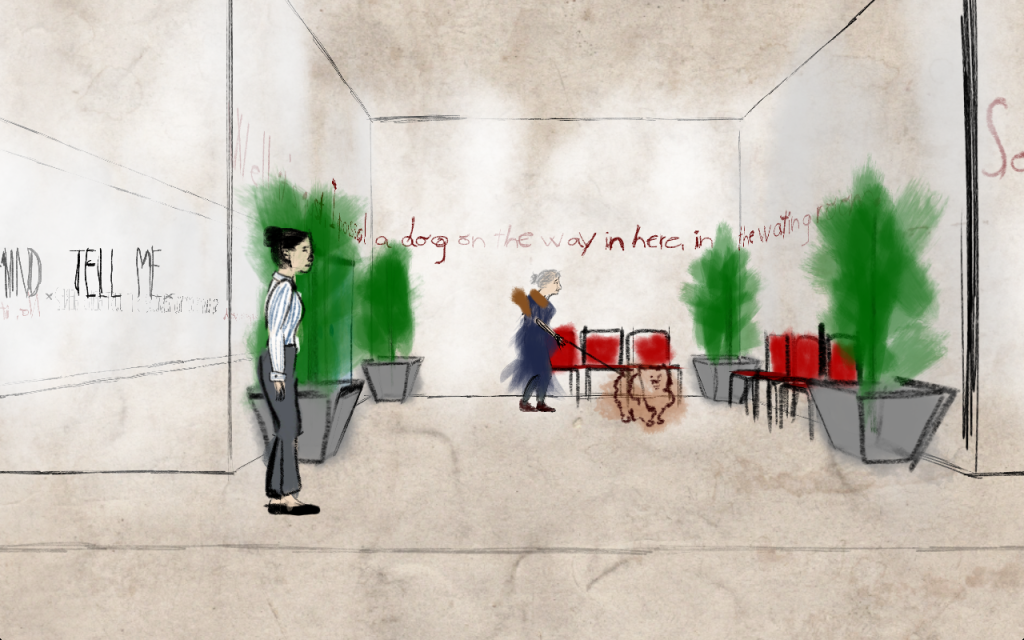Paperknife is an evocative experimental hypertext game that uses virtual space as a literal interpretation of branching narrative structures. You play as a child psychologist who’s seeing another doctor’s patient today. Your goal is to build a relationship with her, to get her to open up about her phobias and difficult family life. The story ends after a single session, apparently a first release of a work that will eventually contain multiple levels, but the ambiguity at the end this release of whether the story continues works with the story’s narrative. A bad ending might result in the girl leaving mid-session never to return. A good ending ensures she’ll schedule a future appointment.
Recalling classic platformers, you move through the narrative by walking to the right. The story is written on the walls behind you. Your only controls are to walk down the hall, move the camera slightly to better read the text in certain alcoves, and choose which hallway you’ll enter, with each representing a different dialogue choice. Each time you choose a path, you cut through a paper door, entering a new hallway and closing off the ones you did not choose. Choices don’t always reflect with tone I think they will, which is a shame, but a familiar one for many hypertext readers.
Stylized visual aesthetics support the story without competing with it. Text was definitely the right choice for this piece. Stylized fonts represent both your character’s voice and that of the girl. Movement becomes more laborious as the player broaches difficult discussions that the patient doesn’t want to have. I love the movement metaphor, but it made for slight confusion about the controls: you can sprint through the halls, but your character doubles over afterwards, which felt like a punishment for moving at a pace that better-suited my reading speed. The animation gives a little life to the player character, but when contrasted with the movement metaphor, it created some confusion on my first playthrough.
Despite the creepy ambience from the visuals and sound, it’s the act of cutting into each hallway that drives the uneasy sense of violence. Great sound design makes the paperknife—the cutting—very satisfying. Something is not okay here, and we’re going to cut into our patient’s psyche until we find it. The pleasure and sense of power from the act of cutting stands in contrast to my desire as a player to want to help this girl, but these two competing pleasures do not feel irreconcilable—instead they feel remarkably human.
I played through the game three times, and was disappointed on replay to discover that the story so far was mostly linear, but I didn’t experiment enough to see if variables or attributes were being tracked. Branching narratives emphasize choices, and in this work choices are the core mechanic. It’s dangerous for a game about decisions to make those choices pointless. Nevertheless, this piece does a great job of making the choices feel weighty on the first playthrough even if each one doesn’t always reveal new information, and there’s a real sense that you could damage the patient for good. The bad endings in which the patient leaves mid-session and doesn’t schedule a follow up feel deeply tragic, yet your detached, clinical tone as you write up your patient’s visit feels like a critique of psychiatry as a profession, serving as a foil to the deeply emotional session while simultaneously trivializing it.
Paperknife is short, free, and available for PC and Mac—definitely worth checking out.


